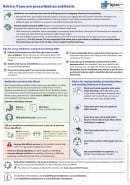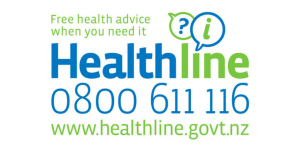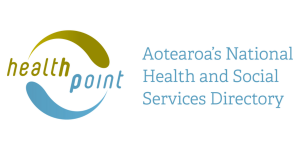Cefaclor
Sounds like 'kef-ah-klor'
Key points about cefaclor
- Cefaclor is an antibiotic used to treat different infections caused by bacteria.
- Cefaclor is also called Ranbaxy-Cefaclor®
- Find out how to take it safely and possible side effects.

Cefaclor is an antibiotic used to treat infections caused by bacteria, such as infections of the urinary tract, skin or chest. It can also be used for ear and sinus infections.
It works by killing or stopping the growth of bacteria (bugs) and gets rid of the infection.
Cefaclor doesn't work against infections caused by viruses.
In Aotearoa New Zealand, cefaclor is available as capsules (250 mg) and liquid (125 mg in 5 ml).
- The dose of cefaclor will be different for different people depending on the type of infection and your age.
- The usual adult dose is 250 mg, 3 times a day.
- The dose for children will depend on their body weight. It's usually given 3 times a day.
- Your healthcare provider will advise you how long to take cefaclor for (usually 1 week, but can be up to 14 days).
- Always take your cefaclor exactly as your healthcare provider has told you. The pharmacy label on your medicine will tell you how much cefaclor to take, how often to take it, and any special instructions.
- Timing of your doses: Cefaclor is usually given 3 times a day. Try to space the doses evenly throughout the day such as first thing in the morning, early afternoon and at bedtime.
- Food: You can take cefaclor with or without food.
- Capsules: Swallow your capsule with a glass of water. Don’t chew it.
- Liquid cefaclor: Shake the bottle well and use an oral syringe or measuring spoon to carefully measure each dose.
- Missed dose: If you forget to take your dose at the correct time, take it as soon as you remember. Try to take the correct number of doses each day, leaving at least 4 hours between doses. Don't take 2 doses at the same time to make up for a forgotten dose.
- Finish the course: It's best to take the whole course of antibiotics for the number of days your healthcare provider has told you to. Don't stop taking it, even if you feel your infection has cleared up.
Here are some things to know when you're taking cefaclor. Other things may be important as well, so ask your healthcare provider what you should know about.
- Penicillin allergy: Let your healthcare provider know if you're allergic to penicillin or any other antibiotics. You may be more likely to have an allergic reaction to cefaclor if you're allergic to any penicillins. Read more about penicillin allergy.
- Alcohol: Cefaclor doesn't directly interact with alcohol. This means that most people could have the occasional drink while taking it without any serious problems. However, if cefaclor makes you feel sick (nausea), don't drink alcohol as it will make you feel worse.
- Cefaclor liquid: Store your cefaclor liquid in the fridge and discard any remaining liquid after your course is finished. You can return any unused medicine to your pharmacy.
- Pregnancy or breastfeeding: Talk to your healthcare provider if you're pregnant, planning a pregnancy or want to breastfeed.
- Other medicines:
- Cefaclor interacts with some medicines, herbal supplements and rongoā Māori, so check with your doctor or pharmacist before starting cefaclor and before starting any new products.
- If you're taking the contraceptive pill, you don't need to use additional contraception if you're taking cefaclor. But if you have diarrhoea (runny poo) or vomiting (being sick) lasting more than 24 hours, absorption of the contraceptive pill may be affected. If you have diarrhoea or vomiting, ask your healthcare provider for advice.
- Vaccines: Cefaclor may stop the oral typhoid vaccine from working. Leave a space of 3 days between the typhoid vaccine and this antibiotic.
Like all medicines, cefaclor can cause side effects, although not everyone gets them. If you're concerned about any symptoms you think might be related to your medicine, talk to your healthcare provider. The following information offers some guidance but doesn't include all possible side effects.
Common side effects
Tell your healthcare provider if these side effects bother you.
- Diarrhoea (runny poo): This is usually mild and should settle after a few days. Drink more fluids and eat simple foods such as toast and pasta. Tell your doctor if your diarrhoea is severe, contains blood or lasts more than a few days. If you have a lot of diarrhoea and you're taking the oral contraceptive pill, let your healthcare provider know.
- Feeling sick (nausea) or being sick (vomiting): Try taking cefaclor with food. If you've been vomiting and you're also taking the oral contraceptive pill, let your healthcare provider know.
- Small white patches in your mouth or a white furry tongue (oral thrush): Ask your healthcare provider for advice.
- Vaginal itching, soreness or discharge (vaginal thrush): Ask your healthcare provider for advice.
Tell your healthcare provider immediately or phone Healthline free on 0800 611 116 if these occur
- Pain in your joints, muscles or bones and a skin rash (especially in children).
- Signs of problems with your liver such as yellow eyes and skin, dark urine, stomach pain.
Phone 111 for an ambulance or go to your nearest accident and emergency (A&E) clinic if these occur
-
Signs of an allergic reaction such as itchy skin, and rash, swollen lips or tongue, problems breathing, like a tight chest or shortness of breath.
Read more about medicines and side effects and reporting a reaction you think might be a side effect.
The following links provide further information on cefaclor.
Cefaclor(external link) New Zealand Formulary Patient Information
Brochures
Advice if you are prescribed an antibiotic [JPG, 250 KB] BPAC, NZ, 2024
Advice if your child is prescribed an antibiotic [JPG, 265 KB] BPAC, NZ, 2024
5 questions to ask about your medications(external link) Health Quality and Safety Commission, NZ, 2019 English(external link), te reo Māori(external link)
Apps/tools
Cefaclor paediatric dose calculator
References
- Cefaclor(external link) New Zealand Formulary
- Cephalosporins, carbapenems, and other beta-lactams(external link) New Zealand Formulary
- Ranbaxy-Cefaclor(external link) Medsafe datasheet, NZ
- Antibiotics – choices for common infections(external link) BPAC, NZ, 2024
- Preventing and managing bronchiectasis in high-risk paediatric populations(external link) BPAC, NZ, 2020
- Risk of neurotoxicity with cephalosporins(external link) Medsafe, NZ, 2023
- Beta-lactam antibiotics and cross-reactivity(external link) Medsafe, NZ, 2016
Brochures
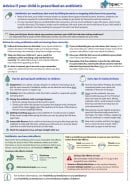
Advice if your child is prescribed an antibiotic
BPAC, NZ, 2024
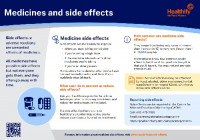
Medicines and side effects
Healthify He Puna Waiora, NZ, 2024
Credits: Healthify editorial team. Healthify is brought to you by Health Navigator Charitable Trust.
Reviewed by: Stephanie Yee, Pharmacist, Auckland
Last reviewed:
Page last updated:


